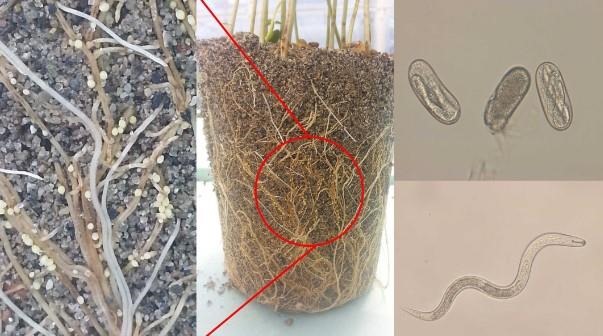By Horacio Lopez-Nicora
Soybean cyst nematode (SCN) remains the most economically damaging soybean pathogen in North America. If SCN levels are above damage threshold, significant yield reduction can often take place without visible symptoms. To know if the nematode is present in a field, soil sample for SCN testing must be properly collected. The presence of SCN in a field, but most importantly, the SCN numbers will determine the best management strategy. Therefore, you need to test your fields to know your SCN numbers.
If you do not know you have SCN in your field, then fall is the best time to sample for SCN. If you know you have SCN but want to track its levels, then fall is the best time to sample for SCN. If you are planning to collect samples for soil fertility, a subsample can be used for SCN testing! After harvest, a soil test will reveal if SCN is present and at what levels. Knowing your SCN numbers in fall will give enough time to plan for next year and to identify the best management practices [learn more on SCN management here and here].

Figure 1. Soybean cyst nematode (SCN) on soybean roots [left and center] and SCN eggs and second-stage juvenile (infective) [right].
Click here to see more...